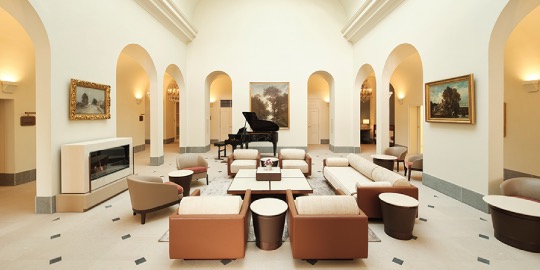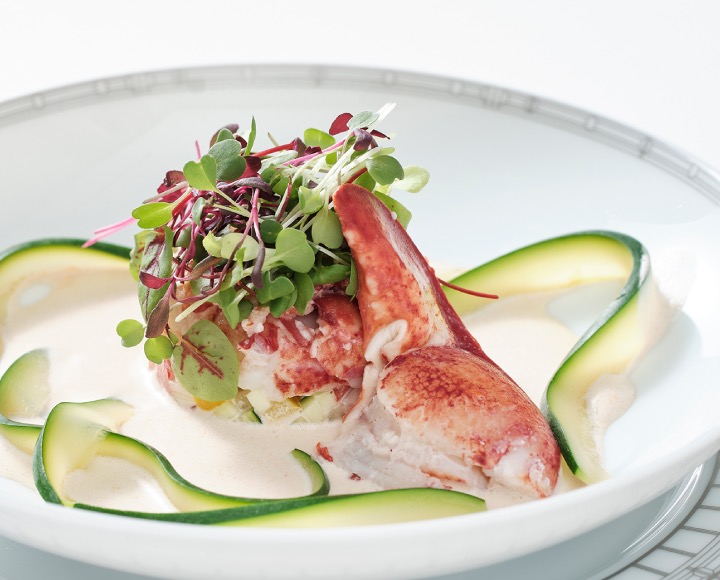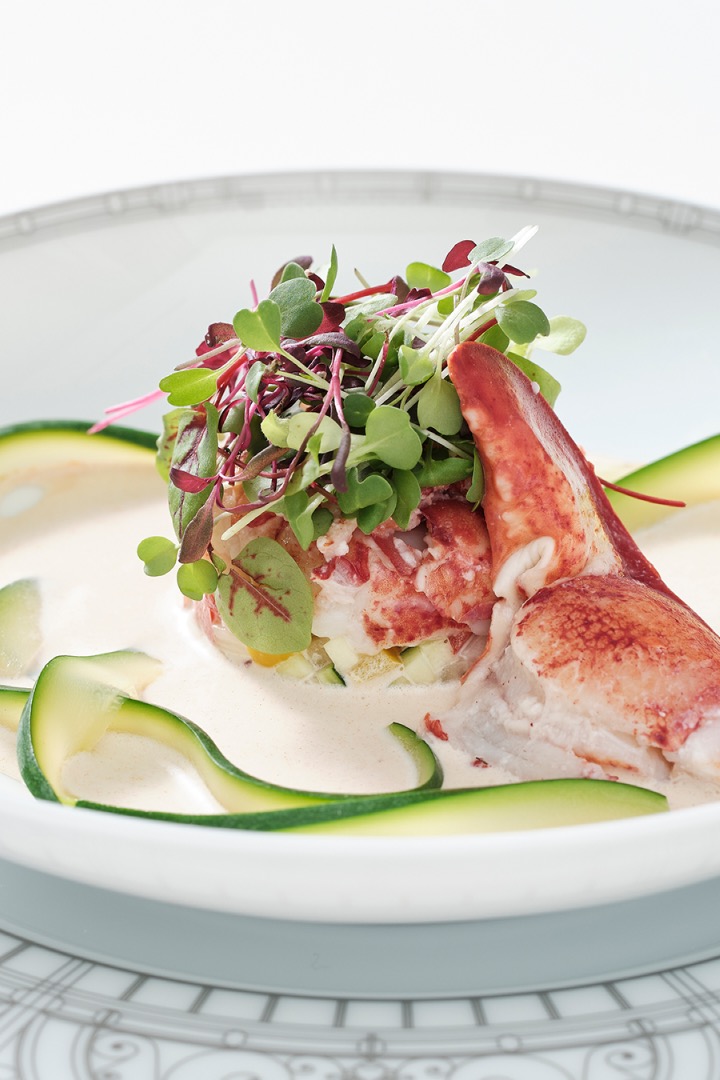HOTEL de L’ALPAGE is filled with carefully chosen furniture and artwork, selected by the owner to create a warm and elegant atmosphere where guests can enjoy the feeling of a refined everyday life.
Among these features, two architectural highlights are the spiral staircase and the stained glass window, which we would like to introduce in this article.
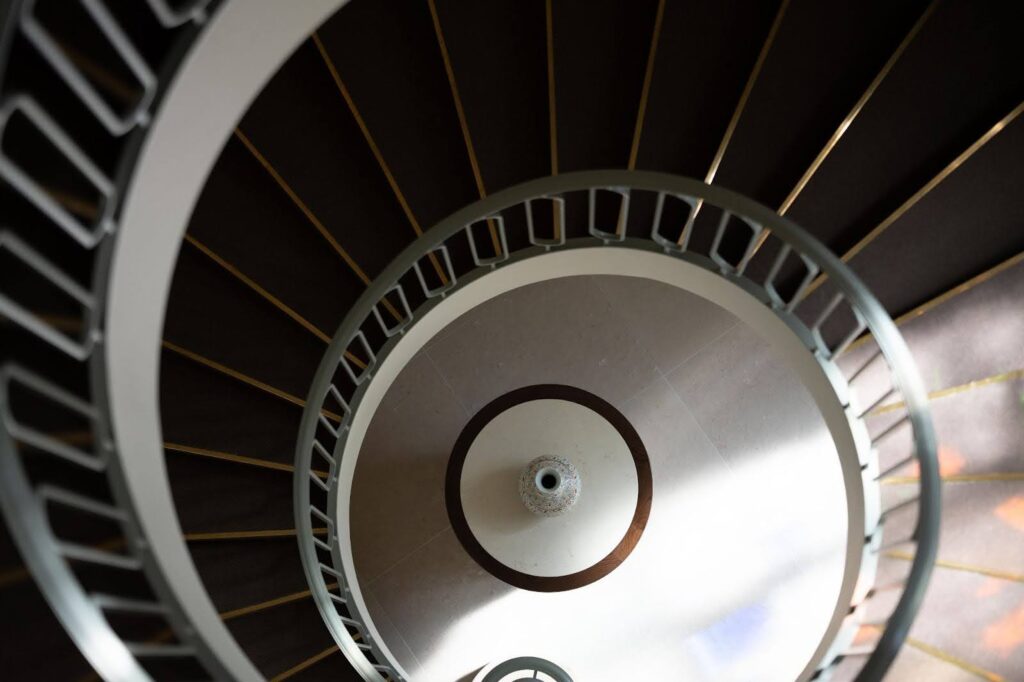
On the right side after the main entrance, guests will find a spiral staircase that gracefully connects the first to the third floor. Right beside it, a beautifully crafted stained glass window adds color and light to the space.
In France, spiral staircases can be found in both historic and modern buildings, reflecting their central role in French design. The French term for a spiral staircase is escalier en colimaçon. The word colimaçon comes from the Norman term calimachon, meaning snail (specifically one with a shell), highlighting the staircase’s coiled form.
While modern spiral staircases are often made of concrete, the one in our hotel was intentionally crafted from steel to create a lighter, thinner, and more airy appearance. With no central core and set slightly away from the surrounding walls, the staircase appears almost to float. In reality, it is subtly supported by hidden connections to the walls.
Even the iron handrail was shaped with great care. To achieve the smooth, continuous curve typical of French homes, we worked closely with skilled craftsmen, asking them to remake and reshape it several times until the final form was achieved.
Throughout the hotel, wallpaper is rarely used. Instead, nearly all walls are painted directly, using carefully selected colors from the British paintmaker Farrow & Ball. Around the spiral staircase, a thoughtful combination of colors creates depth and atmosphere. The side of the staircase and the back wall are painted in Clunch, a soft, warm tone inspired by limestone found in southern England. The surrounding walls are painted in Mizzle, a gentle shade reflecting the color of the sky in the same region. For the handrail, Pigeon, a muted, elegant tone, was chosen. This color combination was intended to evoke the image of a pigeon gently circling a limestone tower, rising higher and higher into the misty sky.
Ascending the smooth curve of the staircase, guests will notice a modern Italian chandelier hanging from the ceiling at the very top. Its delicate blue accents add a vibrant touch, bringing a sense of elegance and contrast to the otherwise classic atmosphere.
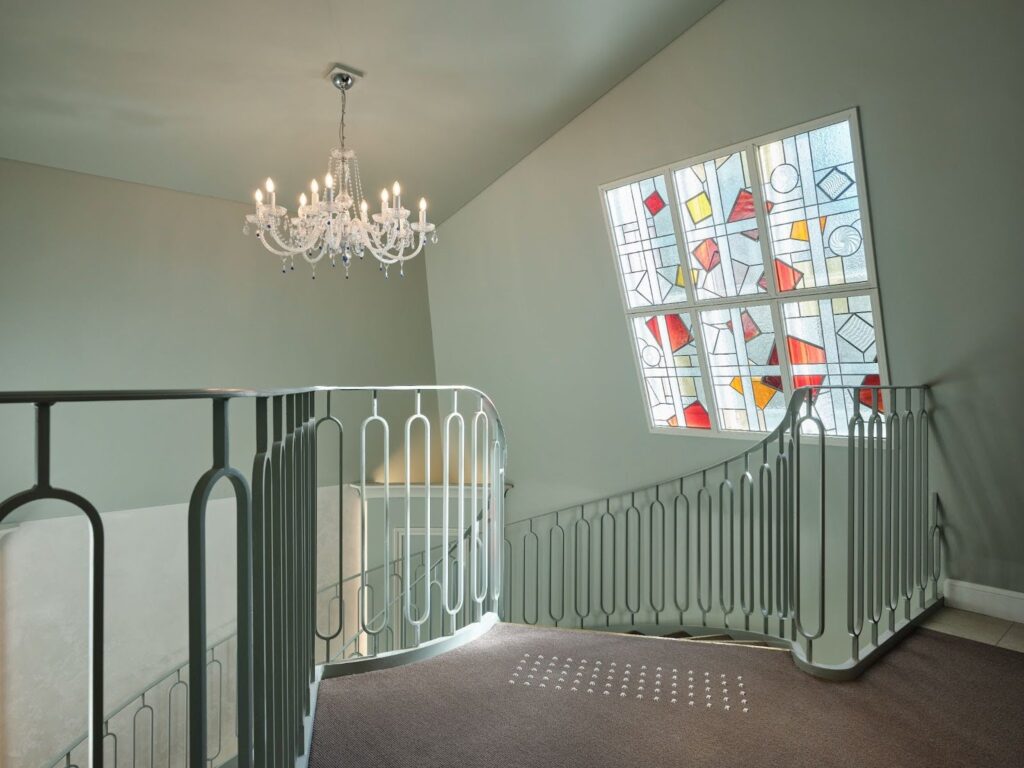
The stained glass window is an original piece created by Mariyo Stained Glass Studio in Tokyo. It features a delicate yet playful design, characterized by a beautiful gradient achieved through the careful combination of different types of glass textures.
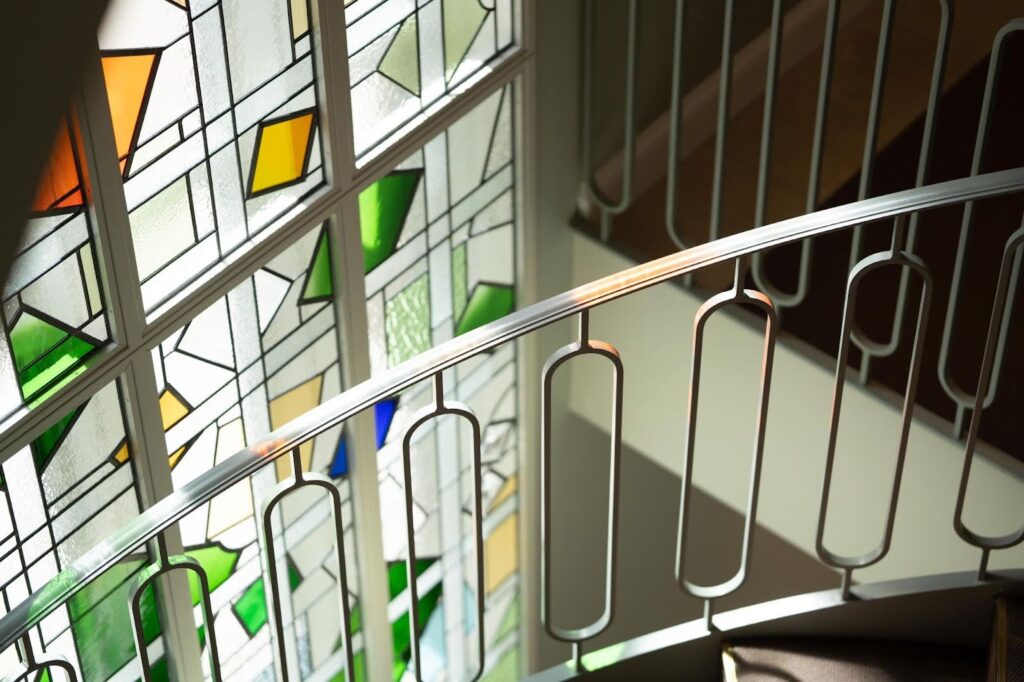
Installed on the east-facing wall, the window allows light to stream through and cast vibrant colors onto the floor on sunny mornings around 8:00 a.m. As time passes, the shifting light gradually moves across the staircase and walls, creating a beautiful moment that only staying guests have the privilege to experience.
The changing colors, shaped moment by moment by the natural light coming in from outside, the delicate harmony with the chandelier and soft ambient lighting, and the view that extends beyond the glass, give this area a sense of depth and quiet richness.
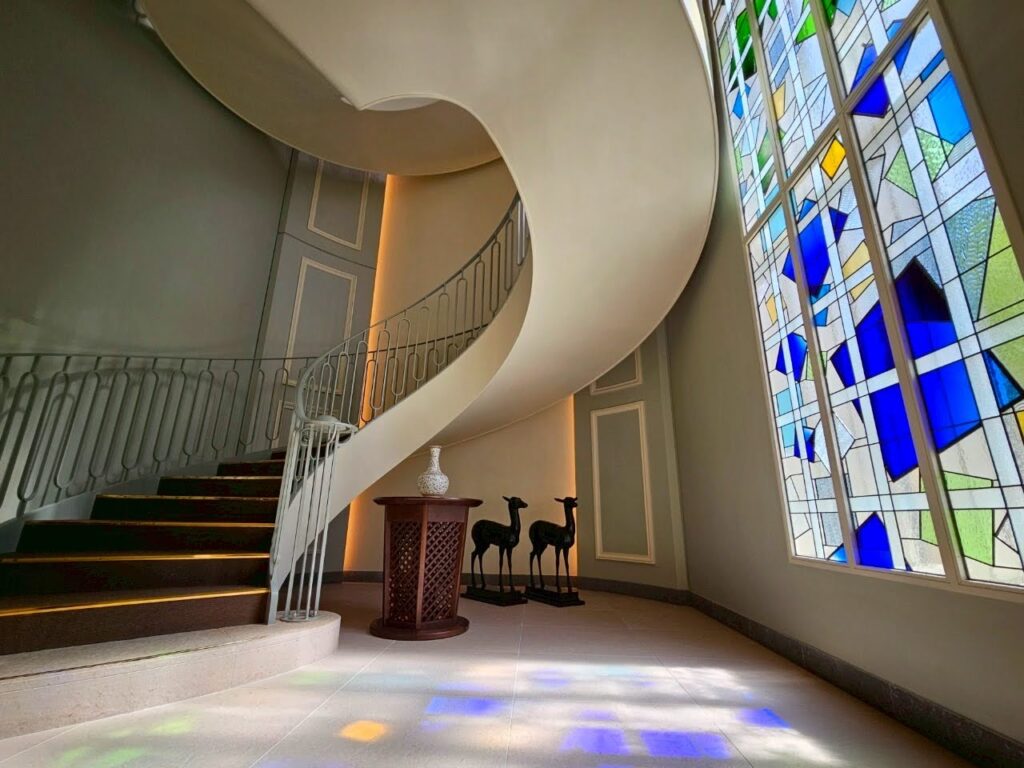
Under the spiral staircase, two deer sculptures, replicas of originals discovered in the 18th century among the ruins of Pompeii in Naples, Italy, create a charming yet striking presence.
Tateshina is home to a large population of deer, so much so that there is even an area called Shikayama, which means “Deer Mountain.” These sculptures offer a small but meaningful reflection of the natural beauty and character of Tateshina for guests to enjoy.
It would be our pleasure to welcome you to our hotel during your visit to Tateshina, and we hope you enjoy every carefully curated detail we have to offer.

